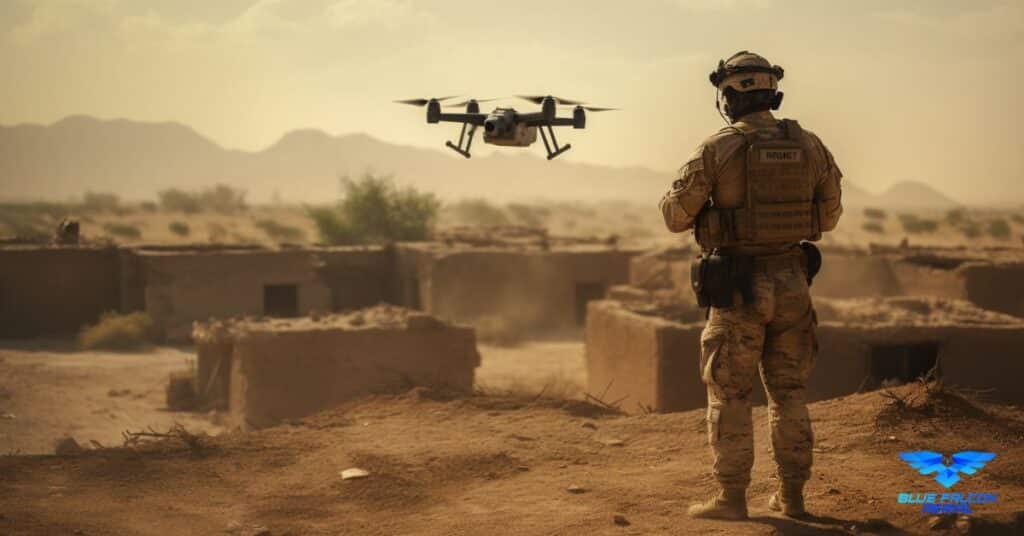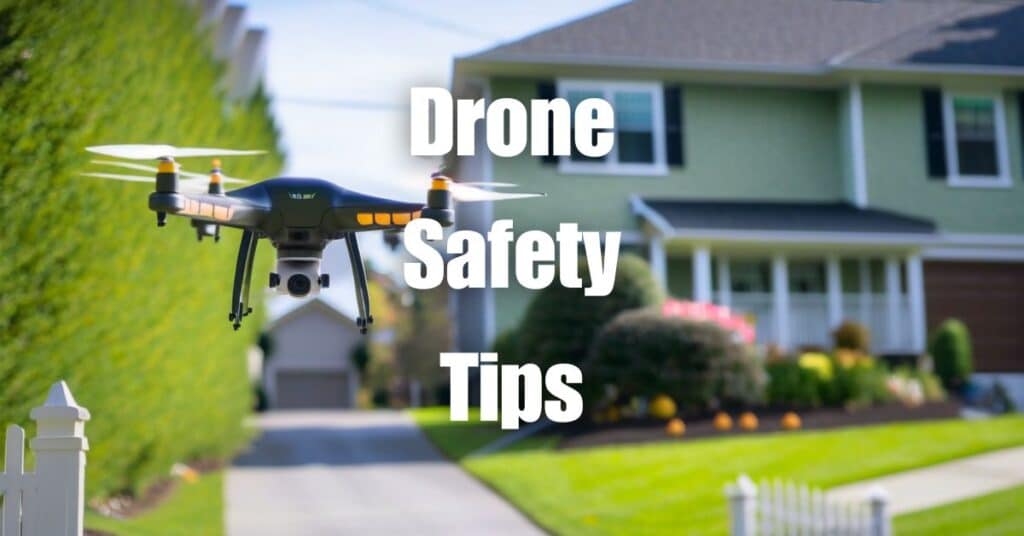Drones, once a niche technology, have rapidly evolved into an essential component of modern warfare. As a result, military drone applications have expanded dramatically, playing a critical role in intelligence gathering, combat operations, and logistical support. This article will provide an in-depth overview of military drone applications, examining their history, current uses, and future potential. By understanding the growing importance of drones in the military sphere, we can better grasp the complexities of modern warfare and the ever-changing landscape of defense technology.
History of Military Drones
Early Unmanned Aerial Vehicles (UAVs)
The concept of unmanned aerial vehicles dates back to the early 20th century. In World War I, remote-controlled aircraft were developed for use as aerial targets, but they were not deployed in combat operations. It wasn’t until World War II that UAVs began to take shape as a vital military tool. During this period, the United States and other countries developed a variety of pilotless aircraft, such as the American TDR-1, which were used for target practice and reconnaissance missions.
Development of Modern Military Drones
The Vietnam War marked a turning point in the development of military drones. The U.S. military deployed the Lightning Bug, a remotely piloted reconnaissance drone, to gather intelligence on enemy positions and movements. This marked the beginning of a new era of drone technology, paving the way for the development of more advanced systems in the coming decades.
In the late 20th century and early 21st century, military drones evolved rapidly. The introduction of the MQ-1 Predator drone in the mid-1990s marked a significant leap forward in drone capabilities, as it was equipped with real-time video transmission and later armed with Hellfire missiles. Today, military drones are used by numerous countries, with the U.S. leading the charge in drone technology and deployment. These modern drones are designed for a wide range of applications, from reconnaissance and surveillance to combat and logistical support.
Types of Military Drones and Their Uses
Military drones come in various shapes and sizes, each designed for specific missions and tasks. These unmanned aerial systems can be broadly categorized into the following types:
Reconnaissance and Surveillance Drones
Reconnaissance and surveillance drones are primarily used for intelligence, surveillance, and reconnaissance (ISR) missions. These drones are equipped with high-resolution cameras, infrared sensors, and radar systems to gather vital information about enemy positions, movements, and activities. Some well-known reconnaissance drones include the Global Hawk and the RQ-21 Blackjack.
Combat Drones
Combat drones, also known as Unmanned Combat Aerial Vehicles (UCAVs), are designed for offensive operations. These drones are armed with various weapons, such as missiles and bombs, to engage and neutralize enemy targets. The MQ-9 Reaper, an advanced version of the MQ-1 Predator, is a prominent example of a combat drone.
Tactical Drones
Tactical drones are used in a range of specialized missions, such as communication relay, electronic warfare, and counter-drone operations. These drones are often smaller and more agile than other types, enabling them to operate in challenging environments and provide real-time situational awareness for ground troops. The AeroVironment Switchblade is an example of a tactical drone used by the U.S. military.
Unmanned Cargo and Transport Drones
Unmanned cargo and transport drones are designed for logistical support, such as delivering supplies, medical evacuation, and personnel transport. While still in the early stages of development, these drones have the potential to revolutionize military logistics by providing quick and efficient transportation of goods and personnel in the battlefield.
Reconnaissance and Surveillance
Reconnaissance and surveillance drones play a critical role in modern military operations by providing valuable intelligence and situational awareness. In this section, we will explore their applications in more detail.
Intelligence, Surveillance, and Reconnaissance (ISR) Missions
ISR missions are essential for gathering information on enemy activities and maintaining situational awareness in the battlefield. Reconnaissance drones can fly for extended periods and cover vast areas, capturing real-time imagery and data that can be analyzed and used to inform tactical decisions. This information is vital for mission planning, targeting, and force protection.
Monitoring Enemy Activity
Reconnaissance drones can be used to monitor enemy movements, troop deployments, and infrastructure. This enables military commanders to identify potential threats and vulnerabilities, assess enemy capabilities, and determine the most effective course of action. The ability to observe enemy activities without putting human lives at risk is a significant advantage provided by drones.
Usage by Different Military Branches
Reconnaissance and surveillance drones are used by various military branches, including the Army, Navy, Air Force, and Marines. Each branch employs drones to support their unique missions and operational requirements. For example, the Navy uses drones for maritime surveillance and reconnaissance, while the Army employs them for battlefield surveillance and target acquisition.
Combat Drones
Combat drones have revolutionized the way modern warfare is conducted by providing a means of engaging targets with precision and reduced risk to military personnel. In this section, we will delve into the capabilities and applications of combat drones.
Armed Drone Strikes and Weapon Capabilities
Combat drones are equipped with various weapons, including guided missiles, bombs, and even laser systems, to engage and neutralize enemy targets. These drones can conduct precision strikes on high-value targets, such as enemy combatants, vehicles, and infrastructure, with minimal collateral damage. Drone strikes have become a key component of counterterrorism operations, particularly in targeting high-ranking terrorists in remote or hard-to-reach areas.
Most Used Drones in the Military
The most widely used combat drone is the MQ-9 Reaper, which has become synonymous with the U.S. military’s drone warfare program. The Reaper is capable of carrying multiple weapons, including Hellfire missiles and laser-guided bombs, and has been deployed in numerous combat operations across the globe. Other notable combat drones include the Israeli-made Heron TP and the Chinese CH-4.
U.S. Combat Drones
The United States has been at the forefront of combat drone development and deployment, with a diverse fleet of armed drones at its disposal. In addition to the MQ-9 Reaper, the U.S. military also employs the MQ-1C Gray Eagle, a medium-altitude, long-endurance drone designed for surveillance and strike missions. The U.S. is also developing advanced drone platforms, such as the stealthy RQ-170 Sentinel and the MQ-25 Stingray, an unmanned aerial refueling tanker.
Tactical Drones and Special Operations
Tactical drones have become indispensable tools for special operations forces, providing real-time situational awareness, communication relay, and electronic warfare capabilities. In this section, we will explore the various applications of tactical drones in special operations.
Communication Relay and Jamming
Tactical drones can be used to establish communication networks in the battlefield, relaying signals between ground forces and command centers. They can also be employed to disrupt enemy communications by jamming radio frequencies, impairing their ability to coordinate and execute operations effectively.
Electronic Warfare
Electronic warfare is a critical aspect of modern military operations, and tactical drones have emerged as valuable assets in this domain. They can be equipped with electronic warfare systems to detect, identify, and disrupt enemy radar and communication systems, rendering them ineffective and vulnerable to attack.
Drones Used by Navy SEALs
Special operations forces, such as the U.S. Navy SEALs, rely on tactical drones for reconnaissance, target acquisition, and situational awareness during high-risk missions. The AeroVironment RQ-20 Puma and the Black Hornet nano drone are examples of small, portable drones used by the SEALs to scout ahead, locate targets, and assess potential threats in real-time, allowing them to adapt and respond to rapidly evolving situations.
Legal and Ethical Considerations
The use of military drones, particularly in armed strikes, has raised several legal and ethical concerns. This section will examine some of the key issues surrounding the deployment of drones in warfare.
Targeted Killings and Collateral Damage
One of the primary concerns regarding the use of combat drones is the issue of targeted killings, which refers to the intentional killing of specific individuals outside of an active battlefield. Critics argue that such practices may violate international law and undermine the principles of due process and human rights. Additionally, drone strikes have been known to cause collateral damage, resulting in the unintentional deaths of innocent civilians.
Accountability and Transparency
Another significant concern is the lack of transparency and accountability surrounding drone operations. Due to the covert nature of drone warfare, it can be challenging to ascertain the precise circumstances and justifications for drone strikes. This lack of transparency has led to calls for greater oversight and disclosure of drone operations to ensure that they are conducted in accordance with international law and ethical standards.
The Future of Autonomous Weapon Systems
As drone technology continues to advance, there is a growing debate over the development and deployment of fully autonomous weapon systems. These systems would be capable of identifying and engaging targets without human intervention, raising ethical concerns about the potential loss of human control and accountability in the decision-making process for lethal actions.
Counter-Drone Measures and Defense
As the use of military drones becomes more prevalent, the development of counter-drone measures and defense systems has become increasingly important. This section will discuss various strategies and technologies employed to detect, track, and neutralize hostile drones.
Detection and Tracking
Detecting and tracking drones is a crucial first step in countering potential threats. Military forces employ a combination of radar, radio frequency (RF) sensors, electro-optical and infrared (EO/IR) cameras, and acoustic sensors to identify and monitor drone activities. These systems can provide real-time information on drone locations, flight paths, and potential payloads.
Jamming and Spoofing
Once a drone has been detected, jamming and spoofing techniques can be used to disrupt its communication and control systems. Jamming involves the transmission of radio frequency signals to interfere with the drone’s remote control or GPS navigation, while spoofing involves sending false signals to deceive the drone’s GPS receiver, causing it to deviate from its intended course or crash.
Kinetic Solutions
Kinetic solutions involve the physical destruction or neutralization of a drone using projectiles, lasers, or other means. Examples of kinetic counter-drone systems include anti-drone guns, which fire projectiles to disable the drone, and high-energy laser systems, which can destroy a drone’s electronic components or damage its airframe.
Net Capture and Drone Interception
Another approach to counter-drone measures is the use of net capture systems or drone interception. Net capture systems involve deploying a net to ensnare the drone, causing it to lose lift and fall to the ground. Drone interception involves using another drone to intercept and disable the hostile drone, either through a collision or by deploying a net or other capture mechanism.
Civilian Ownership and Restrictions
While military drone applications are the focus of this article, it is important to recognize the implications for civilian ownership and the restrictions in place. In this section, we will discuss the limitations surrounding civilian ownership of military-grade drones and the measures taken by governments to prevent their misuse.
Civilian Ownership of Military-Grade Drones
Military-grade drones are generally not available for civilian ownership due to their advanced capabilities, weapon systems, and potential for misuse. However, commercial and hobby drones, which have significantly less advanced features and capabilities, are widely available to civilians for various purposes, such as aerial photography, agriculture, and recreational flying.
Legal Restrictions and Regulations
To prevent the misuse of drones and ensure public safety, governments worldwide have implemented legal restrictions and regulations governing the use of civilian drones. These regulations typically include requirements for registration, flight restrictions in specific areas (e.g., near airports, military installations, or populated areas), and limitations on drone size, weight, and capabilities.
Enforcement and Countermeasures
Law enforcement agencies are also investing in counter-drone technologies and capabilities to detect and neutralize unauthorized or malicious drone activities. These efforts include the development and deployment of drone detection systems, jamming and spoofing equipment, and specialized drone interdiction units within law enforcement agencies.
Future Developments and Innovations
As technology continues to evolve, so too will military drone applications. This section will explore some potential future developments and innovations in the field of military drones.
Swarming Drones
Swarming drone technology involves the coordinated deployment of multiple drones to carry out complex tasks or missions. These swarms can be used for reconnaissance, surveillance, electronic warfare, or even coordinated attacks on targets. Advances in artificial intelligence and machine learning will enable increasingly sophisticated swarm behaviors and capabilities.
Stealth and Advanced Materials
The development of stealth technology and advanced materials will lead to the creation of drones that are more difficult to detect and track. This could involve the use of radar-absorbing materials, advanced aerodynamic designs, and low-observable propulsion systems, making drones increasingly effective for covert operations.
Artificial Intelligence and Autonomy
As artificial intelligence technology advances, military drones will become more autonomous and capable of conducting missions with minimal human intervention. This could involve the use of machine learning algorithms to analyze vast amounts of data in real-time, allowing drones to identify and track targets, navigate complex environments, and make decisions on how to best execute their missions.
Hypersonic and High-Altitude Drones
The development of hypersonic and high-altitude drones will enable military forces to conduct operations at unprecedented speeds and altitudes. These drones could be used for rapid reconnaissance, surveillance, or strike missions, providing a significant advantage in both conventional and asymmetrical warfare scenarios.
In conclusion, military drone applications have revolutionized the way modern warfare is conducted. From reconnaissance and surveillance to combat and logistics, drones have become an indispensable tool for military operations worldwide. As technology continues to advance, we can expect the role of drones to further expand and evolve, presenting new opportunities and challenges for defense planners and policymakers.
To learn more about the broader implications of drone technology, we encourage you to visit Soaring High: A Comprehensive Guide to Building and Growing Your Drone Business. This comprehensive guide will provide valuable insights into the rapidly growing drone industry, including its applications beyond the military sphere. If you require any drone services or consultation, don’t hesitate to contact Blue Falcon Aerial.




